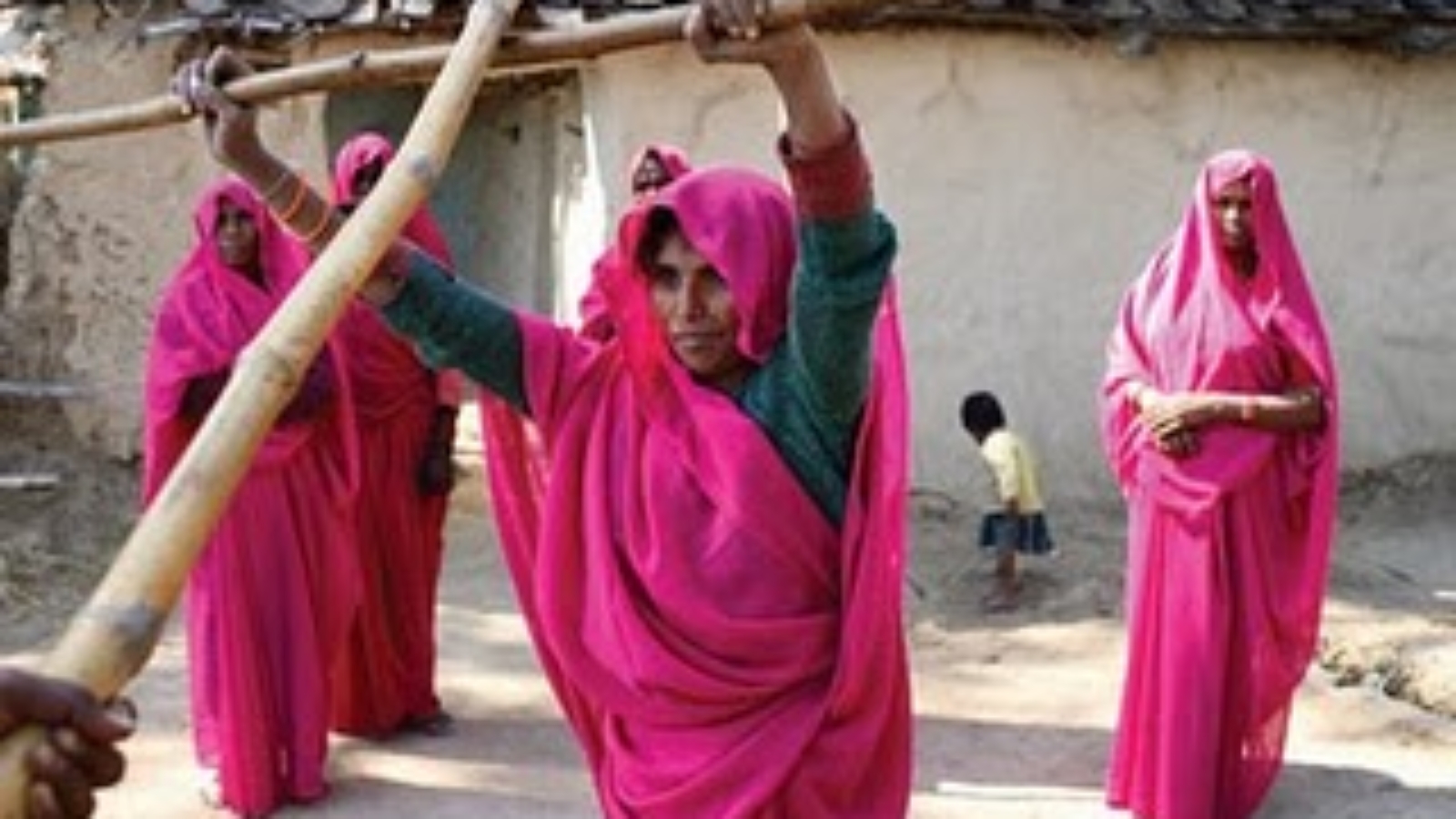In the impoverished region of Bundelkhand in the northern state of Utter Pradesh, hope comes in shades of pink. The gulabi gang, a vigilante group of Indian women known for their distinct uniform–pink saris, challenges corrupt politicians, while punishing abusive husbands. Under the leadership of Sampat Pal Devi, an illiterate, yet determined 40-year-old woman, the gulabis target men who disrespect women and attempt to defraud the poor.
The gang’s efforts have had an immediate payoff. According to the National Commission for Woman, in 2008 Utter Pradesh recorded the highest number of crimes committed against women in the history of the state. The crimes included rape, torture for dowries, and sexual harassment. Pal and her followers, responding to these startling numbers, are in the midst of assembling an even larger “gang for justice.” Flogging husbands who have abandoned or beaten their wives and exposing corruption in the distribution of resources to the poor, the gulabi gang seeks justice for those too weak to do so themselves.
“Nobody comes to our help in these parts. The officials and the police are corrupt and anti-poor. So sometimes we have to take the law in our hands,” says Pal. Women, in particular, lack a voice in the region, living more impoverished lives than their male counterparts, who dominate the traditionally patriarchal society.
Of course, the gulabi gang has other weapons in its arsenal, including the infamous laathis, or bamboo sticks.
To Pal, the gang represents a feminine reclamation of power and independence. It arms women with the confidence and strength to defy misogynistic norms and take control of their futures. Despite the conspicuous economic divide between the genders, Pal reminds her followers that they must hold on to their most powerful weapon—their voices.
Of course, the gulabi gang has other weapons in its arsenal, including the infamous laathis, or bamboo sticks. While Pal notes that violence has never been the gang’s first line of communication, she does not hesitate to brandish her laathi stating, “It helps change the mind of men who think they are more powerful than me.”
Reversing deeply rooted gender stereotypes, however, could take some time—a reality of which Pal is well aware. In the interim, she has set her sights on expanding her gang, recognizing that the greatest strength of the gulabis is the number of women willing to take the plunge into 21st Century feminism.
—Yaffa Fredrick
To watch the gulabi gang in action, you can view Al Jazeera's WITNESS profile– presented in two parts:
Part I: http://www.youtube.com/watch?v=opZz87S2v6M&feature=channel
Part II: http://www.youtube.com/watch?v=46q5UfLSewg&feature=channel
For further readings on the gulabi gang see:
http://www.slate.com/id/2260797
http://news.bbc.co.uk/2/hi/7068875.stm
http://www.hindustantimes.com/Rebels-in-hot-pink/Article1-445695.aspx
http://www.gulabigang.org/en/index.html (gulabi gang website)
